Sky Soundbox Review
Sky Soundbox Review
Sky and Devialet's soundbar punches above its size
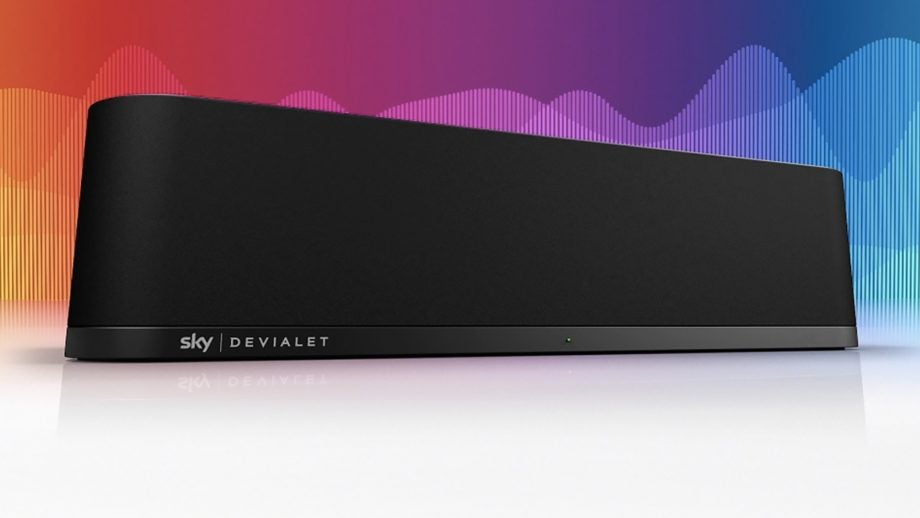
Verdict
Pros
- Weighty bass
- Clear speech
- Sky Q optimisation modes mostly work well
- Large-scale sound from a compact unit
Cons
- Sound lacks the subtlety for music
- Awkward form factor makes it difficult to position
- Not worth the higher price to non-Sky customers
Key Specifications
- Review Price: £299.00
- Six 3-inch woofers and three 2-inch full-range drivers
- 1 x HDMI in, 1 x HDMI out, 1 x optical in
- Bluetooth
- W37.5 x D21 x H9.5cm
What is the Sky Soundbox?
The Soundbox is the result of Sky’s collaboration with French audio brand Devialet. It aims to give Sky customers a top-end soundbar that’s ideal for watching movies and sports, as well as chilling out with music.
As a standalone item the Soundbox costs £799, but new and old Sky TV customers will be able to buy it for just £299. Sky Q Multiroom subscribers will receive a further £50 discount, being able to pick it up for just £249. For a company famous for its premium prices, this seems a surprising move. A good surprise, though.
Related: Best soundbars
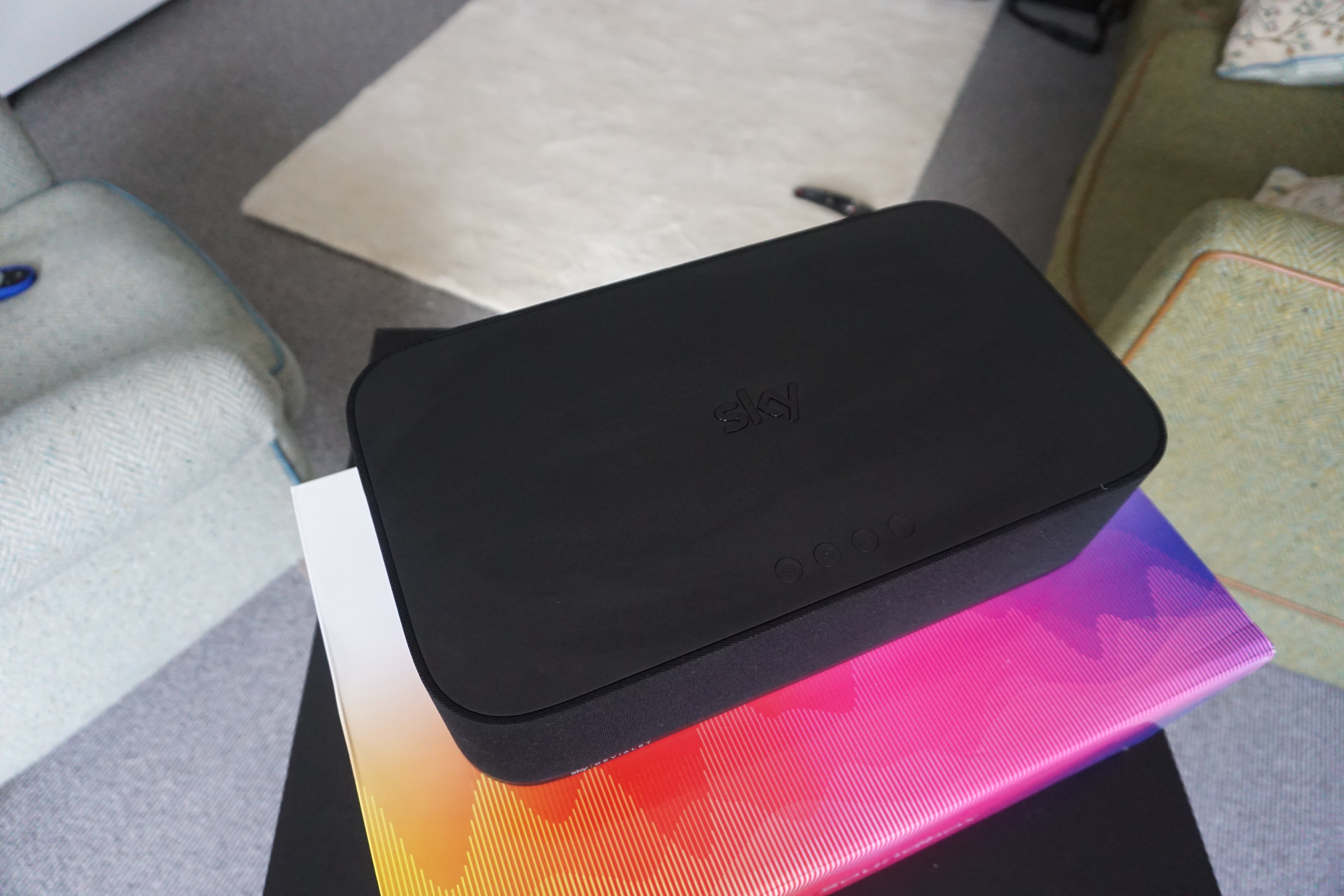
Sky Soundbox – Design and features
Most soundbars and soundbases don’t look that sexy. There are a few notable exceptions to this rule – the Sonos Playbase, for example – but most are simply boring black slabs of plastic that sit awkwardly in front of or below your TV.
The Soundbox sits mostly in the latter category, featuring the same discreet, understated design as Sky’s Q range of hardware. It’s also one of the smallest TV sound systems on the market. This, coupled with its dark black finish and lack of any external embellishments – outside of super-small Sky and Devialet logos – mean it’s fairly inoffensive.
However, the Soundbox’s form factor is unusual. This is neither a soundbar that can be fitted to the wall, nor a soundbase that can be used as a pedestal on which your TV can stand.
To make placement even more problematic, it requires plenty of space (15cm+) on either side of it, because of its driver configuration. Oh, and it doesn’t have an IR repeater, so you’ll have to be careful not to put it in front of your TV’s infrared receiver or your remote won’t be of much use.
On the inside, you’ll find six 3-inch woofers set in the same dual push-push configuration as the super-expensive Devialet Phantom speaker series. Devialet claims the push-push configuration reduces the amount of vibration produced by the woofers, meaning less distortion at high volume and an impressive 35Hz-22kHz frequency range.
Three 2-inch full-range drivers set in a 120-degree configuration accompany them. Like previous Samsung and Yamaha systems, the Soundbox’s drivers aim to create a faux surround sound experience by reflecting audio off the room’s walls.
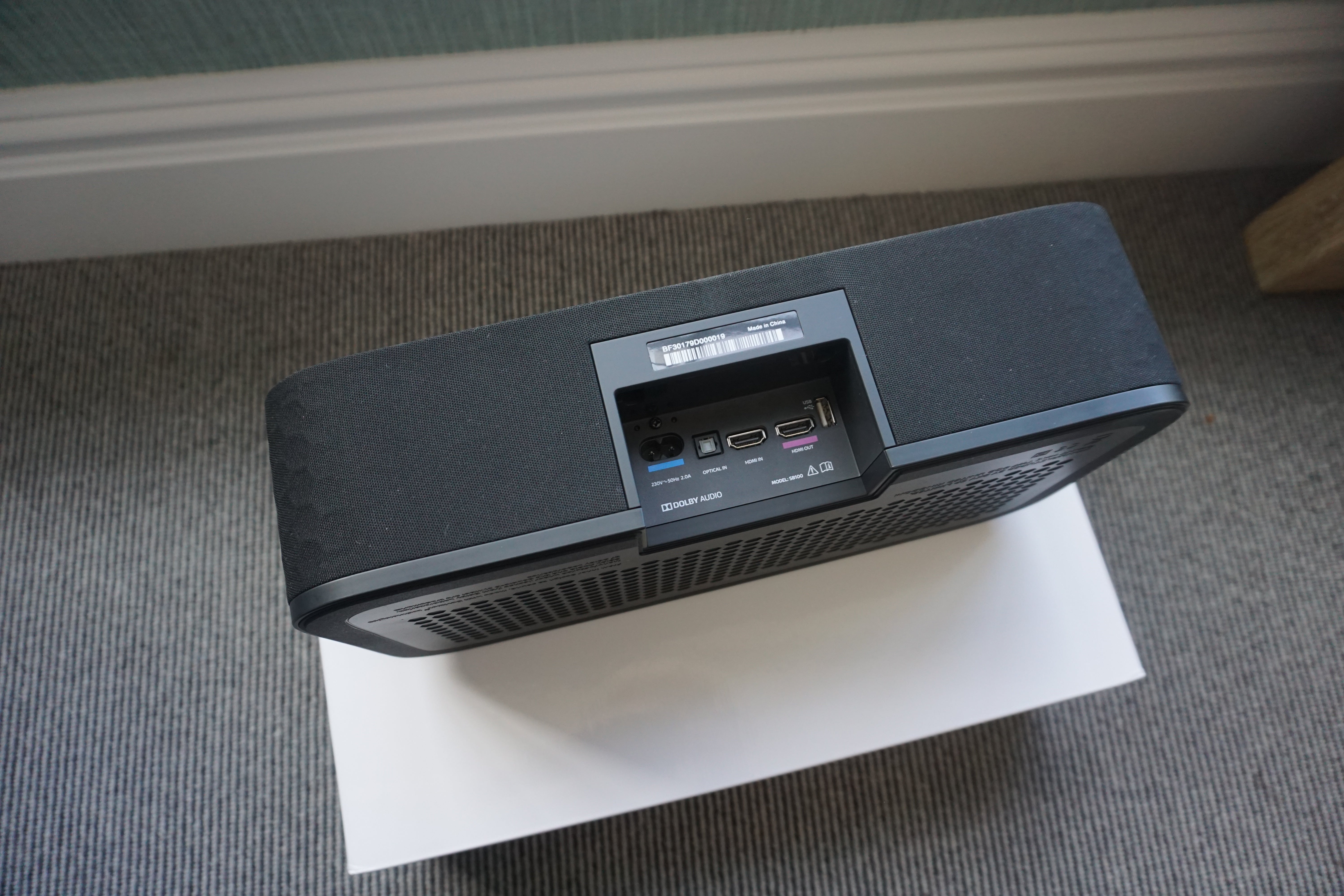
Round the back you’ll find fairly sparse connectivity: a single HDMI input and one output, plus an optical input. There’s also Bluetooth wireless support for those who want to use the Soundbox to play music from their smartphone or tablet.
Controls on the Soundbox comprise just four round buttons on the top: power, source selection, volume up and volume down.
Completing the package is a small remote that again mimics the Sky Q kit in its design. It has the same four buttons as the Soundbox, plus a mute button and one for ‘AV sync’. The latter is for adjusting audio delay in the event that the sound is out of sync with the video.
The remote feels nice in the hand. It’s small, but of a size that isn’t fiddly in use, and has a pleasantly rounded back.
What about Dolby Atmos support? Yes, that would have made sense, because Sky has started broadcasting some sports and movies with Atmos soundtracks. Sadly, the Soundbox’s lack of any upward-firing height speakers means this is a no-go.
Related: What is Dolby Atmos?
Sky Soundbox – Sound and Sky Q extras
The Soundbox does have an optical input for direct hook-up to a TV, but if you’re a Sky customer then you’ll want to route your set-top box through it via HDMI. This provides access to the Sky Q-specific features – the most notable of which is its dynamic volume-management system, called Q Sound.
The system automatically optimises the sound of films and sports to ensure you never have to adjust the volume manually when a movie suddenly changes from a quiet scene to a loud one. It will also help make football commentary clearer, for instance. The EQ for each of these is triggered through metadata from the Sky signal, but there are apparently some detection algorithms involved, too.
Q customers will additionally be treated to three custom sound modes, again designed to optimise the Soundbox for certain situations. There’s Speech mode for ensuring dialogue is clear and defined; Late Night mode for decreasing bass and further enhancing quiet whispers; and Kids mode for giving parents control over the maximum volume levels to protect vulnerable ears.
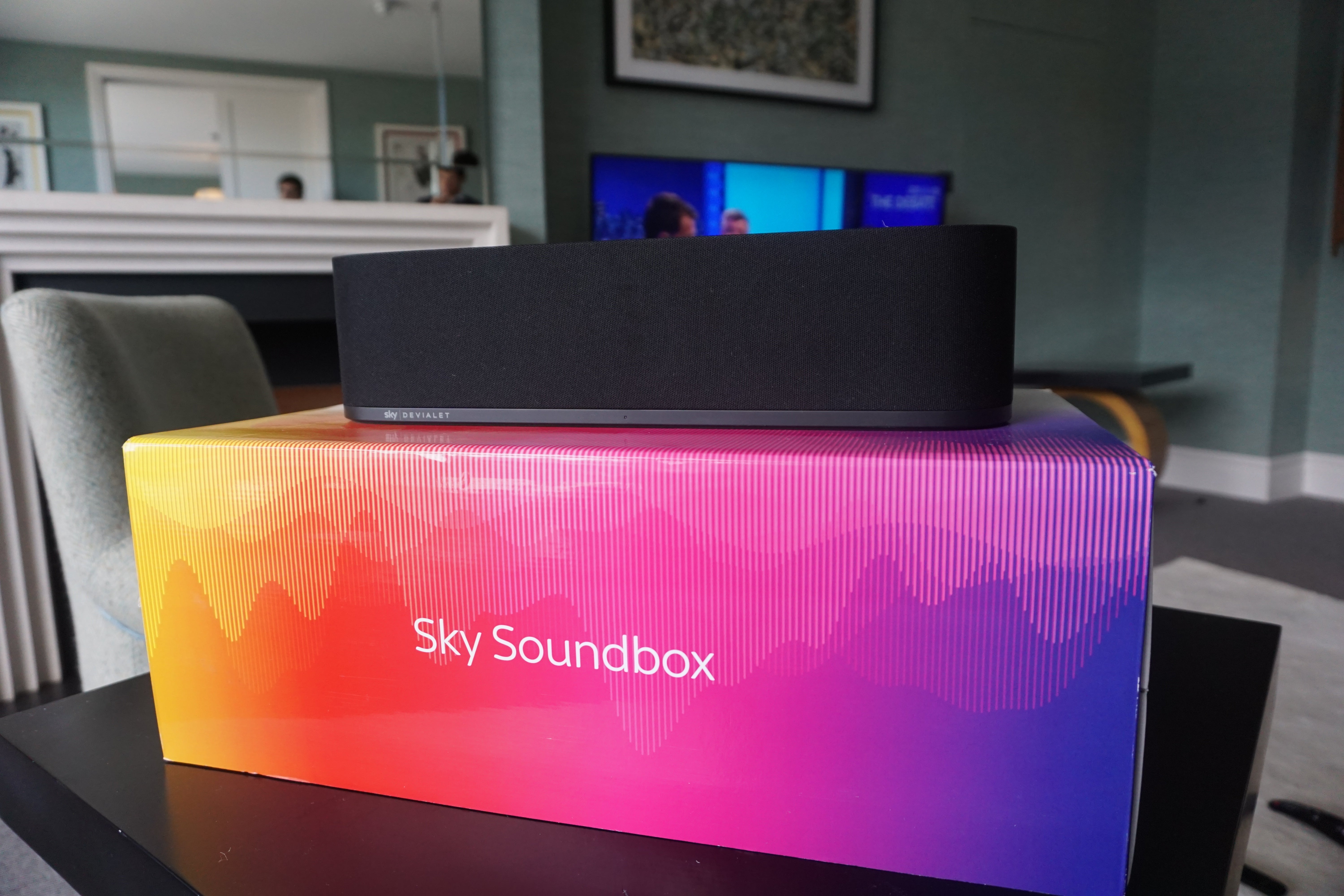
As long as you have HDMI control enabled in your Sky Q settings, you can access all of these modes just by pressing the help (‘?’) button on your Sky remote. They then pop up on your TV, where you’d normally find the options for subtitles and audio descriptions.
These modes and optimisations are generally quite effective, and the natural balance of the Soundbox’s sonics are well suited to a lot of video content. That’s to say that the treble and upper mid-range are quite pronounced, and so is the bass. As a result, dialogue is clear and there’s plenty of rumble when necessary.
With some Premier League football, Q Sound made the commentary much clearer and the crowd chants had more attack; less of a drone. I found it a little more fatiguing on the ears over the course of the whole match, but the extra excitement will certainly please some sports fans.
When there’s a little more subtlety required – and this particularly applies to music – the Soundbox doesn’t fare so well. It’s suddenly more obvious that the treble is a bit shouty and the bass is actually detached and overblown. Again, it’s a bit fatiguing. But if you’re truly worried about that side of things, you probably won’t be listening to music out of a soundbar anyway.
As with most soundbars trying to boast any kind of pseudo-surround, you’ll also need to take more than a pinch of salt. That isn’t to say that the soundstage the Soundbox creates isn’t expansive – just don’t expect to hear effects flying around behind; they’re more from either side of the TV.
You really can’t complain about the scale of sound, though. Like with the Phantom models, Devialet has done an impressive job of getting sonic fireworks from a small box.
Related: Best soundbar
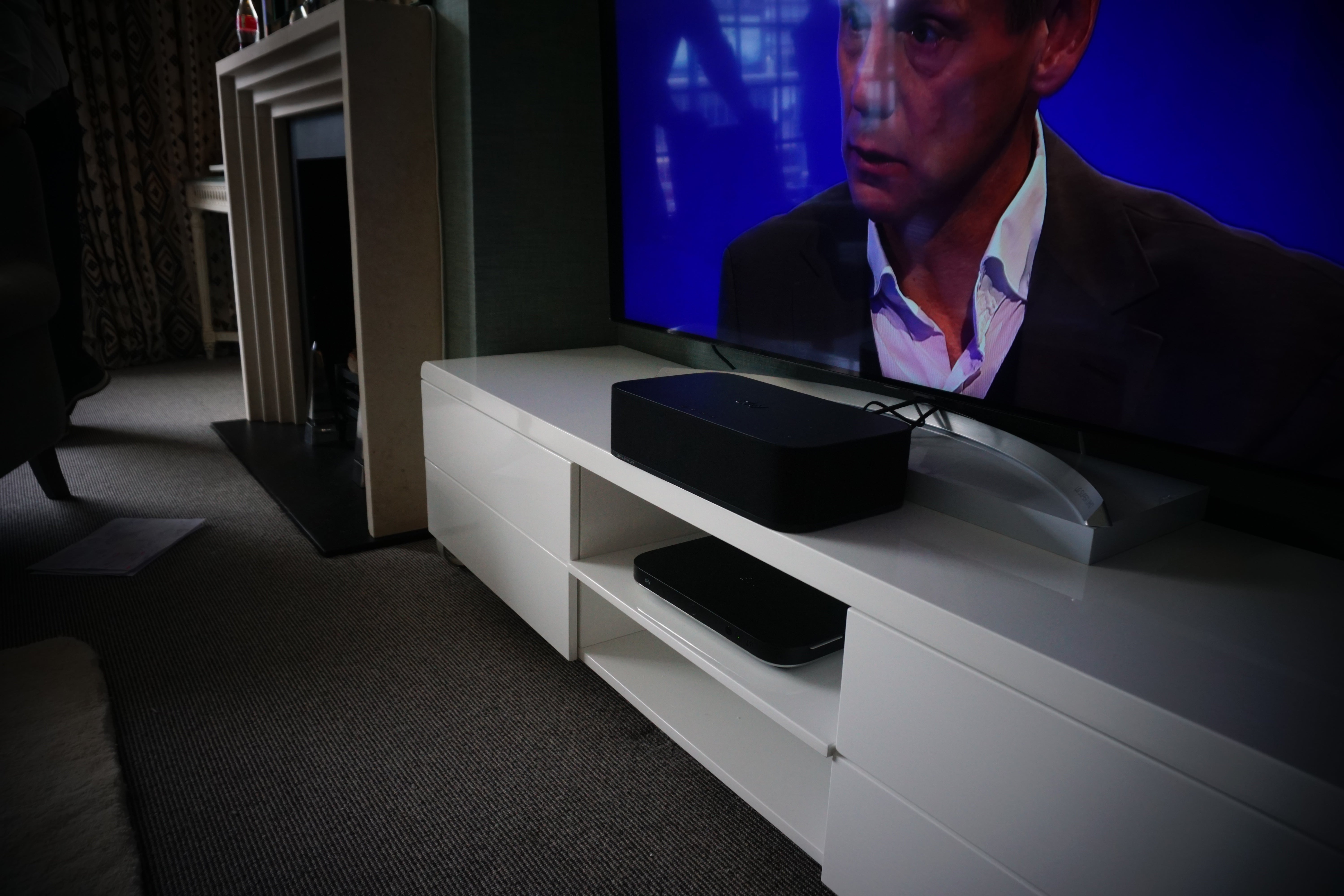
Why buy the Sky Soundbox?
First things first, if you’re not a Sky customer, this really isn’t for you. The full price is too high, and you’ll almost certainly be able to find an alternative that isn’t so awkward to position and offers more refined sonics. The Philips Fidelio B5 is a good bet, and even has detachable wireless surround speakers for big movie nights.
But the form factor is really the only thing that’s holding this back from being a total no-brainer for Sky subscribers. At the discounted price, the Soundbox sounds impressive enough that it’s worth rearranging your AV setup to make space for it.
Verdict
A good soundbar that makes sense if you’re a Sky customer – as long as you have somewhere to put it.


